|
RESULTS AND DISCUSSION
Plant Diversity
A total of 140 species of flowering plants under 44 families, most of them herbaceous, and some woody species were inventorised. Family Poaceae had the highest number of species (19) dominated by Dimeria, Arundinella, Eragrostis etc. (Figure 2); these grow well where soil cover is reasonably good. Predominantly grassy places had good mix of leguminous herbs (15 sp) notably of the genera Geissaspis, Smithia, Zornia, Crotalaria etc. Marshy areas and wet soils were dominated by Scrophulariaceae herbs (12 species) which occurred in association with many members of similar habitats from Cyperaceae, Eriocaulaceae etc. Of the eight species of Eriocaulons four species were endemics to the Western Ghats-west coast. Neanotis foetida of Rubiaceae and Murdannia semeteris of Commelinaceae were sometimes the only herbs on few mm of wet soils on laterite. Euphorbiaceae had 6 species of which Euphorbia fusiformis, a herb with large thick leaves and fairly large tuberous perennating root, was very rare. Nowhere else could occur congregations of insectivorous herbs except on wet laterites, with at least six species of bladderworts (Utricularias) and two of sundews (Drosera indica, Drosera burmanii). Whereas these of Lentibulariaceae and Droseraceae compensate for the rain washed nitrogen deficient soils through supplementary nutrition of insectivory, the predominance of leguminous herbs is due to their association with N-fixing bacteria in their roots. Semi-parasitism is a striking feature to compensate for nutritional deficiency especially in the Strigas, Sopubias and Ramphicarpa of Scrophulariaceae.
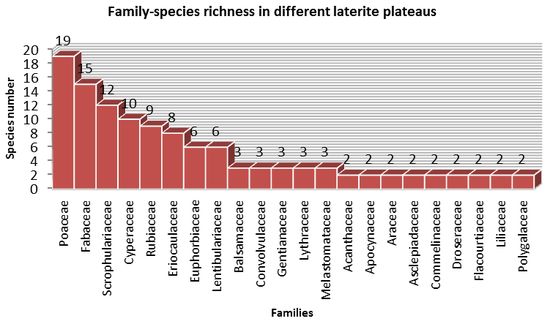
Figure 2: Family-species richness in laterite plateaus (families with minimum 2 species represented)
Species richness
Most lateritic plateaus were rich in especially seasonal herbs; higher richness occurred in Mugali of Honavar taluk (125 sp.), followed by Ramangindi of Kumta (112 sp.) and Bhatkal plateau (111 sp.) (Figure 3). Mugali and Bhatkal are associated with rare kind of wildlife, especially for pangolin, and mouse deer. Utricularia’s and Eriocaulons and scores of other herbs in their mass flowering render great scenic beauty to the laterite plateaus during the peak of rainy season.
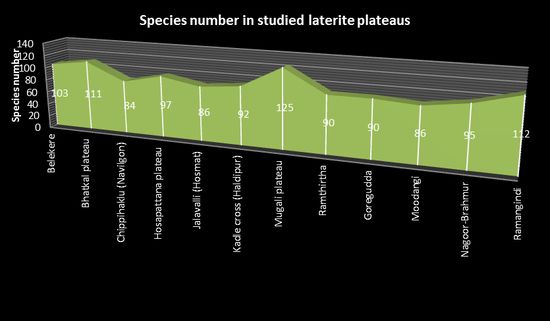
Figure 3: Total species number catalogued from 12 laterite plateaus of Uttara Kannada
Richness in endemic and rare species
Endemism among seasonal herbs was exceptionally high, contrary to otherwise bleak and infertile nature of the terrain. Details regarding endemic number of Western Ghats (including west coast), and of India-Sri Lanka together as well as total endemism percentage are depicted in the (Figure 4). Mugali plateau peaks in respect of Western Ghat endemics (36 sp.) followed by 30 of Ramangindi and 28 of Bhatkal. This is the first study of its kind for coastal Karnataka laterites bringing out their exceptional seasonal biodiversity and endemism. Recent years witnessed a spate of reports on new species of herbs from the laterite plateaus of Western India, including a new genus Paracautleya bhatii (Table 2). While the conservation status of many of these is yet to be evaluated Rotala malabarica and Justicia ekakusuma have figured in the IUCN Red List (2012) as Critically Endangered.
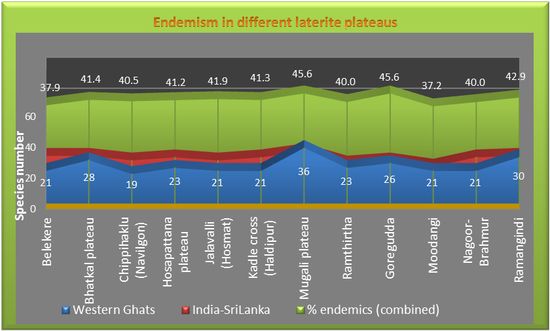
Figure 4: Western Ghats, India-Sri Lanka and combined endemism percentage in different laterite plateaus
Table 2: Some newly discovered and threatened species from the laterites of Western India
| Sn. |
Species |
Distribution in India |
Reference |
| 1 |
Eriocaulon madayiparense |
Kerala |
Swapnaet.al. (2012) |
| 2 |
Chamaesyce katrajensis |
Kerala |
|
| 3 |
Dipcadi goaense |
Maharashtra |
Prabhugaonkar et.al. (2009) |
| 4 |
Eriocaulon belgaumensis |
Karnataka |
Shimpale, et.al. (2010) |
| 5 |
Eriocaulon epedunculatum |
Maharashtra |
Yadav, et. al.(2008) |
| 6 |
Eriocaulon kannurense |
Kerala |
Sunil et. al. (2012) |
| 7 |
Eriocaulon sivarajanii |
Kerala |
Ansari R and Balakrishnan N.P (2009) |
| 8 |
Justicia ekakusuma |
Kerala |
Pradeep et.al. (1991) |
| 9 |
Lepidagathis keralensis |
Kerala |
Madhusoodanan P.V and Singh N.P. (1992) |
| 10 |
Lindernia madayiparense |
Kerala |
Narayanan et. al. (2012) |
| 11 |
Nymphoides krishnakesara |
Kerala |
Joseph K.T and Sivarajan V.V (1990) |
| 12 |
Paracautleya bhatii |
Karnataka |
Smith R.M (1977) |
| 13 |
Rotala malabarica |
Kerala |
Pradeep et. al. (1990) |
Species assemblages
The laterite hills have some characteristic woody perennial elements of stunted trees and shrubs as well such as Sapium insigne, Strychnos nux-vomica, Zizyphus mauritiana, Grewia microcos, Flacourtia montana, Ficus arnottiana, Memecylon edule, Aglaia eleagnoidea etc. The wetter valleys in between have more evergreen species which also might occur in the interior ghat forests. The wet season brings to the fore several microhabitats with their assemblage of characteristic species. Whereas seasonal, shallow bogs like habitats are characterized by Eriocaulon cuspidatum, Weisneria triandra, marshy areas have Utricularias’s and more members of Eriocaulon (Figure 5). As water, the most critical factor for prolific herbal richness dry up soon after the end of rains, the seasonal herbs wither away furnishing a browner hue to the terrain, leaving behind only hardy herbs that cling on to life like xerophytes like Lepidagathis prostrata of Acanthaceae. Many plants of which the aerial green shoots appear in the rains have perennating tubers or bulbs in shallow soils; for e.g. Euphorbia fusiformis, Curculigo orchioides, Iphigenia indica, Tacca pinnatifida, Theriophonum dalzelli etc.
Figure 5: Glimpses of plant diversity of laterite plateaus in coastal Uttara Kannada
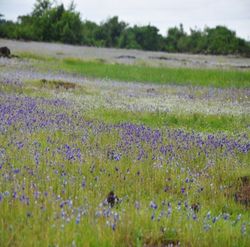
A). Myriads of flowers blooming in the Bhatkal plateau
|
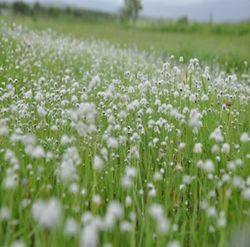
B). Carpet of Eriocaulon odoratum
|
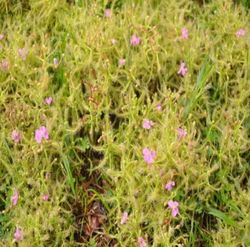
C). Drosera indica
|
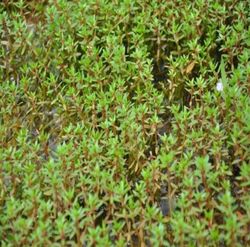
D). Rotala malaphuzensis
|
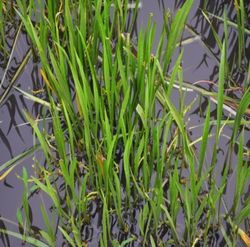
E). Weisneria triandra
|
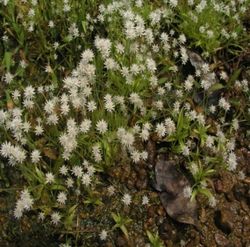
F). Eriocaulon stellulatum
|
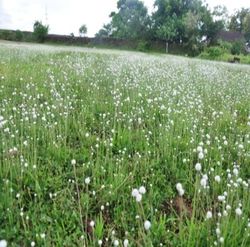
G). Eriocaulon lanceolatum
|
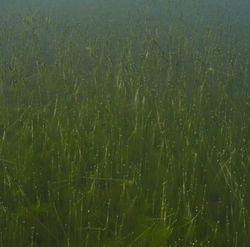
H). Eriocaulon cuspidatum
|
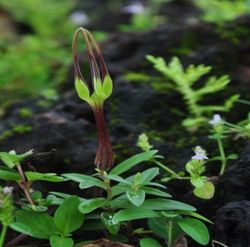
I). Ceropegia attenuata
|
|













